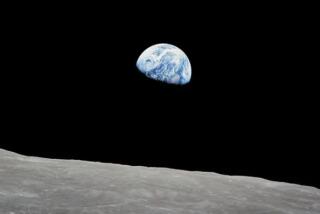Quake Lessens Length of Day
- Share via
The earthquake that struck beneath the Indian Ocean on Dec. 26 very slightly sped up Earth’s rotation, shortening the length of a day by about 2.6 millionths of a second, according to a computer model developed at the Jet Propulsion Laboratory in Pasadena.
Earth’s rotational speed changes depending on how mass moves on the planet’s surface. Mass can be moved by shifting winds, ocean currents -- and earthquakes. When the India tectonic plate lurched beneath the Burma plate, mass shifted toward Earth’s center.
“This is analogous to a spinning ice skater bringing her arms closer to her body,” said geophysicist Richard Gross, who created the model. “She gets more compact and spins faster.”
Because the Global Positioning System readings that measure the planet’s rotation are not precise enough, the shift is not likely to be detected, Gross said.
Any changes caused by the quake would be overshadowed by changes in winds and currents which can slow or speed the Earth’s rotation hundreds of times more than a large earthquake can.
Gross’ model also shows that the quake caused the planet to tilt by an extra inch. This is a small fraction of the 33 feet that the Earth can wobble on its axis during each year of rotation.
More to Read
Sign up for Essential California
The most important California stories and recommendations in your inbox every morning.
You may occasionally receive promotional content from the Los Angeles Times.








